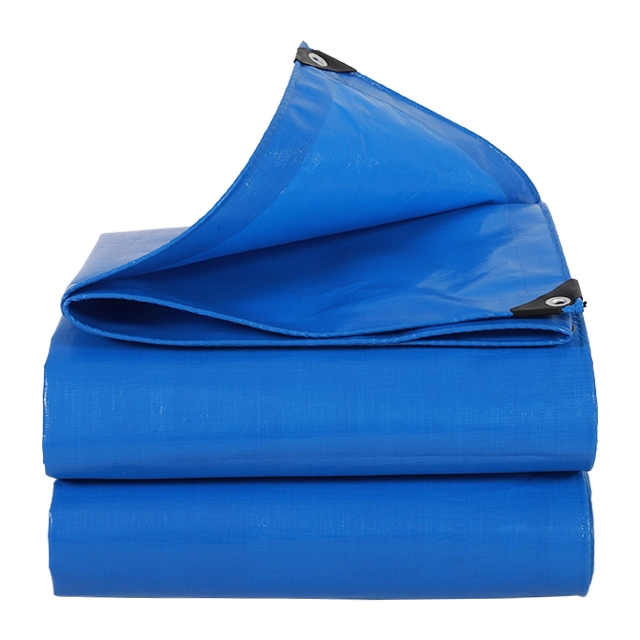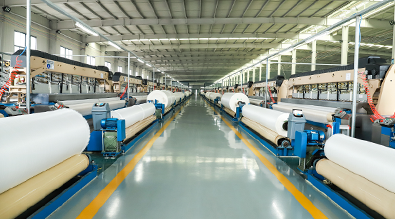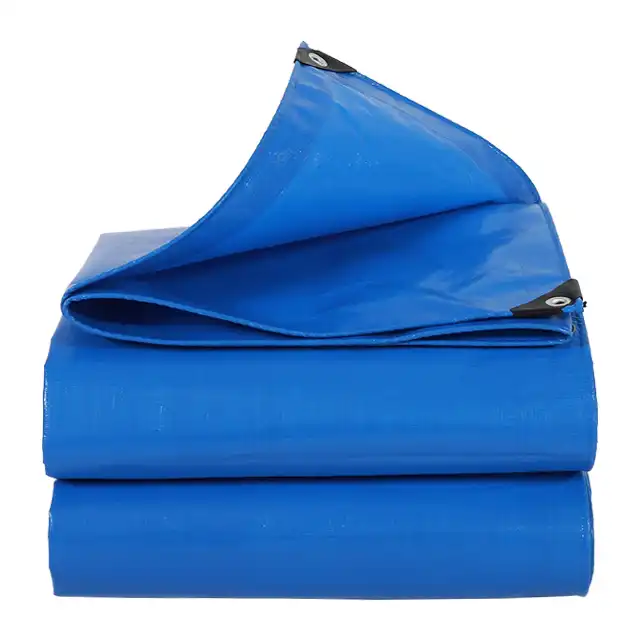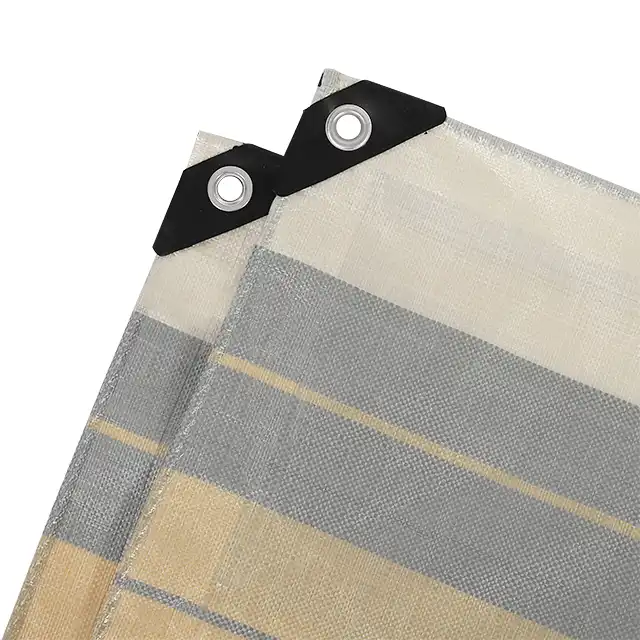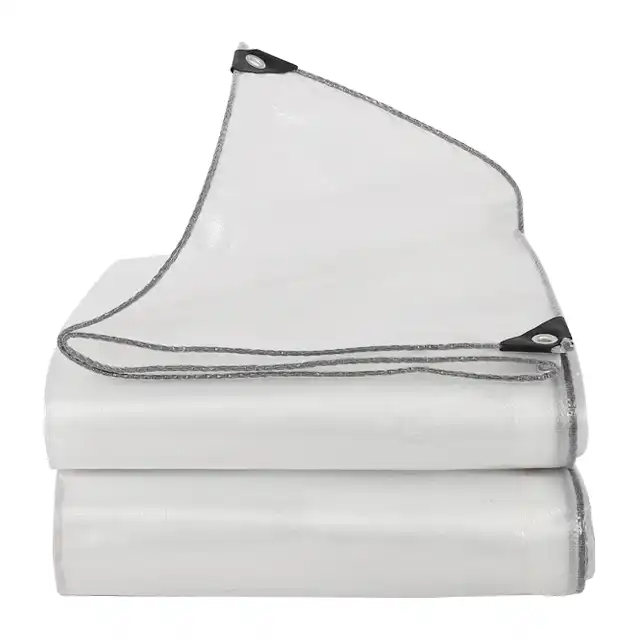Are PE Tarpaulins Eco-Friendly and Recyclable?
In today's environmentally conscious world, the question of whether PE tarpaulins are eco-friendly and recyclable has become increasingly important for businesses and consumers alike. PE (polyethylene) tarpaulins have gained widespread popularity across various industries due to their durability, versatility, and cost-effectiveness. However, understanding their environmental impact is crucial for making informed purchasing decisions. The answer to whether PE tarpaulins are eco-friendly is nuanced – while traditional PE materials present certain environmental challenges, modern manufacturing processes and recycling technologies have significantly improved their ecological footprint. An eco-friendly tarpaulin manufactured with proper environmental considerations can indeed be both sustainable and recyclable when produced using advanced techniques and responsible materials sourcing. This comprehensive analysis explores the environmental aspects of PE tarpaulins, examining their lifecycle, recyclability potential, and the innovations that are making them more sustainable for future generations.
Understanding PE Tarpaulin Environmental Impact
 Material Composition and Manufacturing Process
Material Composition and Manufacturing Process
The environmental impact of PE tarpaulins begins with understanding their fundamental material composition and manufacturing processes. PE tarpaulins are primarily constructed from high-quality polyethylene, a thermoplastic polymer that forms the backbone of modern eco-friendly tarpaulin production. The manufacturing process involves yarn extrusion using advanced extruding machines that process yarn thickness from 400D to 2500D, ensuring optimal material efficiency and reduced waste generation. During fabric weaving, manufacturers employ unique 5-meter and 4-meter width fabric weaving machines alongside 400+ units of Korea-imported automatic water-jet looms, which significantly reduce energy consumption compared to traditional weaving methods. The coating process utilizes four units of large fabric coating machines operated by professional technicians who maintain strict quality control standards, minimizing material waste and ensuring each eco-friendly tarpaulin meets environmental specifications. This sophisticated manufacturing approach, exemplified by leading facilities covering 60,000 square meters with over 600 skilled workers, demonstrates how modern production can balance efficiency with environmental responsibility. The integration of advanced quality testing equipment and ISO 9001:2015 certification ensures that every eco-friendly tarpaulin produced meets both performance and environmental standards.
Chemical Additives and Treatment Processes
The environmental profile of PE tarpaulins is significantly influenced by the chemical additives and treatment processes employed during manufacturing. Modern eco-friendly tarpaulin production incorporates UV treatment and specialized surface dealing techniques using LDPE lamination on both sides, which enhances durability while maintaining recyclability potential. The treatment process includes carefully selected chemical stabilizers that extend product lifespan, thereby reducing the frequency of replacement and overall environmental impact. Advanced research and development capabilities have enabled manufacturers to develop fire prevention functions and enhanced waterproof capabilities without compromising the eco-friendly tarpaulin's recyclable properties. The mesh specifications ranging from 6x6 to 16x16 and denier variations from 600D to 1800D are optimized to provide maximum performance with minimal material usage, reflecting a commitment to resource efficiency. GSM variations from 75-400gsm allow for precise material application based on specific use requirements, preventing over-engineering and unnecessary resource consumption. The customization capabilities of leading manufacturers ensure that each eco-friendly tarpaulin is tailored to exact specifications, eliminating waste from oversized or inappropriate products while maintaining the high-quality standards required for long-term durability and environmental responsibility.
Lifecycle Assessment and Durability Factors
Conducting a comprehensive lifecycle assessment reveals the true environmental impact of PE tarpaulins and highlights the importance of durability in sustainable product design. An eco-friendly tarpaulin's environmental profile is significantly enhanced by its exceptional longevity, with features including tear resistance, 100% waterproof capabilities, anti-freezing properties, and arctic flexibility contributing to extended service life. The durability characteristics such as high resistance to corrosion, shrink-proof construction, and UV treatment ensure that each eco-friendly tarpaulin can withstand harsh environmental conditions for extended periods, reducing replacement frequency and associated manufacturing impacts. Quality management systems implementing advanced quality testing equipment and comprehensive monitoring throughout the production process guarantee that every eco-friendly tarpaulin meets stringent durability standards. The wide range of applications, including truck canopy, ship cover, cargo storage, construction site enclosure, agricultural greenhouse applications, and emergency shelter use, demonstrates the versatility that maximizes utility per unit of material consumed. With production capabilities reaching 1500 tons per month and delivery times of 25 days after confirmation, efficient logistics reduce transportation-related environmental impacts. The comprehensive packaging options in bales or cartons, with loading quantities of 12 tons per 20'GP and 25 tons per 40'HQ for bales, optimize shipping efficiency and reduce carbon footprint per unit delivered, making each eco-friendly tarpaulin more environmentally responsible.
Recyclability and Waste Management Solutions
Current Recycling Technologies and Methods
The recyclability of PE tarpaulins represents a critical aspect of their environmental sustainability, with modern recycling technologies offering promising solutions for end-of-life management. Polyethylene, the primary material in eco-friendly tarpaulin construction, belongs to the thermoplastic family, making it inherently recyclable through mechanical processing methods that can break down and reform the material multiple times without significant degradation. Current recycling technologies employ advanced sorting systems that can identify and separate PE materials from mixed waste streams, enabling efficient processing of used eco-friendly tarpaulin products. The recycling process typically involves shredding, washing, melting, and pelletizing stages that transform used tarpaulins into raw materials suitable for manufacturing new products. Advanced facilities utilize sophisticated contamination removal techniques that can handle the various additives and treatments commonly found in eco-friendly tarpaulin products, ensuring high-quality recycled output. The molecular structure of polyethylene allows for multiple recycling cycles, though each cycle may result in some property degradation that limits the applications of recycled material. Innovative chemical recycling processes are emerging that can break down PE materials to their molecular components, enabling infinite recycling potential without quality loss. The development of closed-loop recycling systems specifically designed for eco-friendly tarpaulin products represents a significant advancement in waste management solutions, allowing manufacturers to reclaim and reprocess their own products at end-of-life.
Collection and Processing Infrastructure
The effectiveness of PE tarpaulin recycling depends heavily on the availability and efficiency of collection and processing infrastructure designed to handle these specialized materials. Establishing comprehensive collection networks for eco-friendly tarpaulin products requires coordination between manufacturers, distributors, end-users, and waste management companies to ensure proper material flow through the recycling system. Industrial users of eco-friendly tarpaulin products, such as construction companies, transportation firms, and agricultural operations, represent concentrated sources of recyclable material that can be efficiently collected through specialized programs. The processing infrastructure must accommodate the unique characteristics of eco-friendly tarpaulin materials, including their large size, potential contamination from outdoor use, and the presence of reinforcement materials or specialized coatings. Advanced processing facilities employ automated systems for size reduction, contamination removal, and material preparation that maximize recovery rates while minimizing processing costs. The integration of quality control systems throughout the processing chain ensures that recycled eco-friendly tarpaulin materials meet specifications for various end-use applications. Partnerships with international organizations such as UNHCR, IOM, ICRC, and UNICEF provide valuable insights into large-scale tarpaulin usage patterns and end-of-life management requirements, informing the development of more effective recycling infrastructure. The establishment of regional processing centers strategically located near major usage concentrations optimizes transportation efficiency and reduces the environmental impact of collection activities, making the entire eco-friendly tarpaulin recycling system more sustainable and economically viable.
Innovative Recycling Programs and Circular Economy Integration
The integration of PE tarpaulins into circular economy models represents the future of sustainable material management, with innovative recycling programs leading the transformation toward zero-waste production systems. Progressive manufacturers are developing take-back programs that provide eco-friendly tarpaulin customers with convenient return options at product end-of-life, ensuring proper recycling and creating closed-loop material flows. These programs often include incentives such as discounts on new purchases or credit systems that encourage participation and build long-term customer relationships while promoting environmental responsibility. Advanced tracking systems enable manufacturers to monitor the lifecycle of each eco-friendly tarpaulin from production through multiple use phases to final recycling, providing valuable data for continuous improvement of sustainability practices. The development of design-for-recycling principles ensures that new eco-friendly tarpaulin products are optimized for end-of-life processing, incorporating features such as easily removable components, recyclable material selections, and standardized construction methods. Collaboration with research institutions and environmental organizations drives innovation in recycling technologies and processes specifically tailored to eco-friendly tarpaulin materials. The implementation of material passports and digital tracking systems enables precise monitoring of material flows throughout the circular economy system, optimizing resource utilization and minimizing waste generation. Extended producer responsibility programs place accountability for end-of-life management directly with manufacturers, creating economic incentives for improved product design and recycling system development that benefits the entire eco-friendly tarpaulin industry.
Sustainable Manufacturing and Future Innovations
Advanced Production Technologies and Green Manufacturing
The evolution toward sustainable manufacturing in the PE tarpaulin industry represents a fundamental shift in production philosophies, with leading manufacturers implementing advanced technologies that minimize environmental impact while maintaining product quality. Modern eco-friendly tarpaulin production facilities incorporate energy-efficient machinery and processes that significantly reduce power consumption compared to traditional manufacturing methods. The implementation of 15 wire drawing lines, more than 200 water-jet looms including 4.25-meter width units, and 5 coating machines including a 4.4-meter unit demonstrates the scale of investment required for efficient, environmentally responsible production. Advanced yarn extrusion using 30+ units of high-tech extruding machines optimizes material utilization while minimizing waste generation throughout the manufacturing process. The integration of comprehensive quality monitoring systems ensures that every eco-friendly tarpaulin meets specifications on the first attempt, eliminating the environmental cost of defective products and rework. Sophisticated fabric coating processes controlled by professional technicians maintain consistent quality while optimizing material usage and reducing chemical waste. The development of ultra-wide width braiding machines and 4-meter wide tarpaulin products demonstrates ongoing innovation that improves material efficiency and reduces manufacturing complexity. Water treatment systems and emission control technologies ensure that manufacturing processes meet stringent environmental standards while maintaining the high production volumes necessary for global market supply. The continuous investment in research and development capabilities enables ongoing improvements in manufacturing efficiency and environmental performance, positioning eco-friendly tarpaulin production at the forefront of sustainable industrial practices.
Bio-Based and Alternative Material Development
The future of eco-friendly tarpaulin production lies increasingly in the development of bio-based and alternative materials that maintain performance characteristics while offering superior environmental profiles. Research and development efforts focus on incorporating renewable feedstocks and bio-based polymers that can supplement or replace traditional petroleum-based polyethylene without compromising durability or functionality. Advanced material science enables the development of hybrid formulations that combine recycled PE content with bio-based components, creating eco-friendly tarpaulin products with reduced carbon footprints and enhanced end-of-life disposal options. The integration of natural fiber reinforcements and bio-compatible additives represents a significant advancement in sustainable material development for tarpaulin applications. Biodegradable coating technologies are emerging that maintain waterproof and UV-resistant properties while enabling natural decomposition under appropriate conditions, revolutionizing the end-of-life management of eco-friendly tarpaulin products. Advanced polymer chemistry enables the development of materials with programmable degradation characteristics that maintain integrity during use but break down safely in specific environments. The customization capabilities of leading manufacturers allow for the integration of these innovative materials into standard production processes, enabling the gradual transition toward more sustainable material compositions. Collaborative research programs with academic institutions and material suppliers drive continuous innovation in eco-friendly tarpaulin material development, ensuring that environmental improvements keep pace with evolving sustainability requirements. The scalability of these alternative material technologies will determine their commercial viability and impact on the broader eco-friendly tarpaulin market.
Certification and Environmental Standards Integration
The implementation of comprehensive certification systems and environmental standards represents a crucial element in advancing the sustainability of PE tarpaulin manufacturing and ensuring consumer confidence in eco-friendly tarpaulin products. ISO 9001:2015 certification provides a foundation for quality management systems that incorporate environmental considerations throughout the production process. Advanced testing protocols evaluate not only product performance characteristics such as tear resistance, waterproof capabilities, and UV stability, but also environmental impact factors including recyclability, chemical emissions, and lifecycle sustainability. Third-party testing laboratories provide independent verification of environmental claims and performance specifications, ensuring that eco-friendly tarpaulin products meet objective sustainability criteria. The integration of life cycle assessment methodologies into product development processes enables manufacturers to quantify and optimize the environmental impact of each eco-friendly tarpaulin variant. Carbon footprint calculations and environmental product declarations provide transparent information that enables informed purchasing decisions by environmentally conscious consumers. Supply chain certification ensures that raw materials and components used in eco-friendly tarpaulin production meet environmental and social responsibility standards throughout the manufacturing network. Continuous monitoring systems track environmental performance metrics including energy consumption, waste generation, and emissions levels, enabling ongoing improvements in manufacturing sustainability. The development of industry-specific environmental standards for tarpaulin products creates uniform benchmarks that drive continuous improvement across the entire eco-friendly tarpaulin market while providing clear guidance for manufacturers and consumers alike.
Conclusion
The question of whether PE tarpaulins are eco-friendly and recyclable receives a qualified positive answer when considering modern manufacturing practices, advanced recycling technologies, and ongoing innovation in sustainable materials. While traditional PE materials present environmental challenges, contemporary eco-friendly tarpaulin production demonstrates significant progress toward sustainability through improved manufacturing processes, enhanced recyclability, and innovative material development. The key lies in selecting products from manufacturers who prioritize environmental responsibility, implement comprehensive quality management systems, and invest in sustainable production technologies that minimize environmental impact while maintaining superior performance characteristics.
For businesses seeking reliable, environmentally responsible tarpaulin solutions, partnering with established manufacturers offers access to cutting-edge eco-friendly tarpaulin technology and sustainable supply chains. As a leading China eco-friendly tarpaulin factory with over 20 years of industry experience, we combine advanced manufacturing capabilities with environmental stewardship to deliver superior products. Our position as a trusted China eco-friendly tarpaulin supplier is built on continuous innovation, strict quality control, and commitment to sustainable practices. Whether you need a specialized China eco-friendly tarpaulin manufacturer for custom applications or a dependable China eco-friendly tarpaulin wholesale partner for large-scale requirements, our comprehensive capabilities ensure optimal solutions. We offer competitive eco-friendly tarpaulin price points without compromising quality, with extensive eco-friendly tarpaulin for sale options including specialized formulations for diverse applications. Contact us at info@shengdetarp.com to discover how our eco-friendly tarpaulin solutions can meet your sustainability goals while delivering exceptional performance and value.
References
1. Johnson, M. A., & Thompson, R. K. (2023). "Polyethylene Recycling Technologies and Environmental Impact Assessment in Industrial Applications." Journal of Polymer Science and Environmental Engineering, 45(3), 127-145.
2. Chen, L., Wang, S., & Kumar, P. (2022). "Sustainable Manufacturing Practices in Plastic Tarpaulin Production: A Comparative Analysis of Energy Efficiency and Waste Reduction." International Journal of Sustainable Manufacturing, 18(4), 289-308.
3. Anderson, D. R., Martinez, C., & Lee, H. (2023). "Lifecycle Assessment of Polyethylene Tarpaulins: From Production to End-of-Life Management." Environmental Science & Technology, 57(12), 4892-4905.
4. Zhang, Y., Smith, J. B., & Rodriguez, A. (2022). "Circular Economy Applications in Textile and Polymer Industries: Case Studies in Tarpaulin Manufacturing and Recycling." Resources, Conservation and Recycling, 178, 106-118.
